A Brief History of Wool – Domestication, Breeding, and Economics
 The Fair Isle Jumper by Stanley Cursiter, 1923
The Fair Isle Jumper by Stanley Cursiter, 1923
Nothing says warmth like a cozy wool sweater but it took’ thousands of years of selective breeding to get it.’ Ancient’ sheep bear little resemblance to today’s wool sheep, selectively bred for their fine coats. Like other domestic animals, humans bred sheep for different traits to develop the breeds we have today. Let us step back in time and explore the evolution of wool.
A Wool for All Purposes
Wool has a bad reputation for being itchy but a good hand-spinner knows that not all wool is created equally. Wool is essentially sheep hair and like human hair, sheep hair comes in all textures, colors, and lengths. It can be long and smooth or short and curly and everything else in between. Fine wool can be soft enough for baby clothes and coarse wool has been used in carpets for centuries. The wool from each breed of sheep has its own characteristics and historically, was bred for specific uses. There are fine wool sheep, medium wool sheep, and coarse wool sheep. The wool from sheep specifically bred for meat is typically too coarse for’ clothing fabric but can be used for stuffing or tough upholstery fabric.
Wool is also unique’ in that it keeps its insulation properties when it is wet. This makes it an excellent choice for things like socks and layering, especially when the weather is bad. Cotton and linen will wick the heat from your body, which is great in the summertime when you are trying to keep cool, not so great in the winter. Fisherman of the British Isles are famous for wearing wool pullovers called, ganseys, as the tightly knitted fabrics helped protect them from the elements and kept them warm, even when soaked.

Wool can be spun two ways – woolen or worsted. Woolen spun is from wool that has been carded with wool cards, sort of like wool brushes. While wool cards get out the major tangles, they leave the wool light and fluffy. Spinning carded wool produces a softer, warmer thread that is good for things like hats, mittens, and baby clothes. Worsted spun is from wool that has been combed with wool combs. Like the name suggests, wool combs not only get out the tangles but perfectly align the wool fibers so that they are all facing the same direction. Worsted wool is strong and solid, which makes a hard wearing fabric. Worsted fabrics and yarns are excellent for things like socks, coats, and suiting.
 A mouflon sheep, thought to be an ancestor of domestic sheep
A mouflon sheep, thought to be an ancestor of domestic sheep
Domestication of Sheep
There are many breeds of wild sheep and not all were domesticated by humans. Through bones found at neolithic sites, archaeologists think that humans started domesticating sheep around 7000 B.C.E. Early sheep had two coats, a long outer coat to protect it from the elements and a softer inner coat for warmth. These sheep also shed their coats each spring and didn’t need to be sheared. The earliest domesticated sheep were probably bred only for meat. Early humans would have used their hides for clothing and stuffed the wool in their shoes for insulation. Over time, sheep were selected for wooliness instead of meat. Around the 4th millennium, there are records that list wool sheep and reference sheep plucking, as sheep shears hadn’t been invented yet. Wool sheep are referenced in records from ancient Uruk and later in Sumeria.
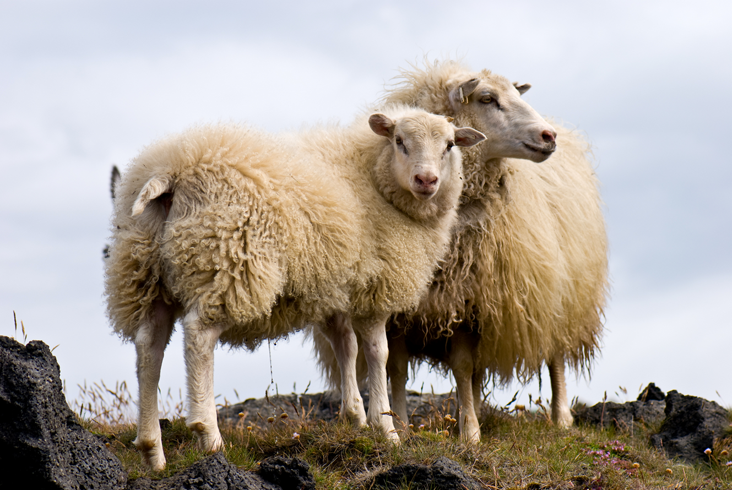 Icelandic sheep, resemble early domesticated sheep
Icelandic sheep, resemble early domesticated sheep
Fast forward to the’ Romans. They specifically bred sheep for color such as white, black, and red, as well as quality. Wool was the main fabric for their clothing so they needed a lot of it. Under tunics were probably linen or cotton but togas, over tunics, and stollas, the dress of the married Roman woman, were all of wool. While very little clothing from Ancient Rome survives, wall paintings show light, airy, and sometimes almost translucent fabrics draped over colorful dresses.

In the ruins of Pompeii is a fullery, where cloth would not only be processed after weaving but cleaned and pressed for the locals as well. It was like an ancient dry cleaners. The smaller basins around the outside would be filled with a mixture of urine and other cleaning agents. Slaves would stomp on the cloth either to clean it or to full it after weaving. Then the cloth would be taken to the larger basins in the middle of the room where they would be rinsed. There were clothing pressers to smooth out the fabric and other places for fabric treatment such as stain removal or special fabric coatings. The togas of candidates running for office would be bleached and rubbed with chalk until they were a shiny white. Fulling mills were later’ developed in the medieval ages so that humans would no longer have to stomp on cloth.
 The Fullery in Pompeii
The Fullery in Pompeii
The Mighty Merino
In the middle ages, Spaniards started crossing Spanish ewes with African rams from Morocco. The result was the merino sheep. It’s wool was finer than any other sheep and Spain cornered the European market on wool. ‘ Spain refused to export any merinos and so retained control of the sheep. Then in the 1700s, some Spanish monarchs decided to share the merinos with their relatives in other European countries and thus the quest for the merino sheep began.
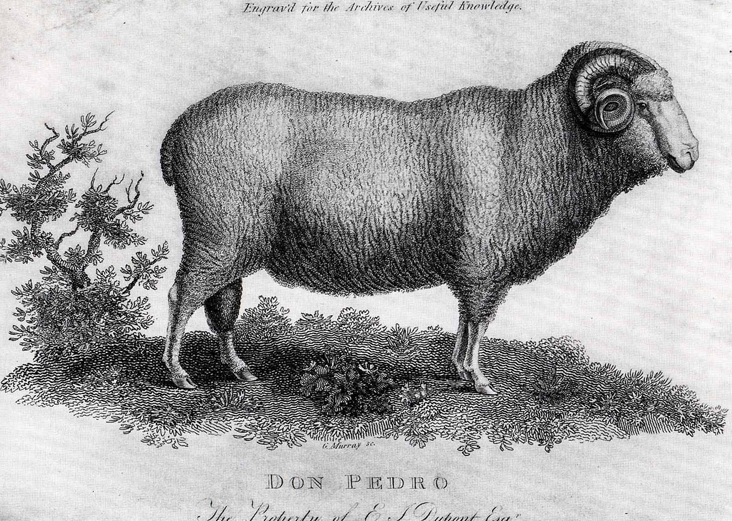 Engraving of Merino Sheep from 19th century
Engraving of Merino Sheep from 19th century
Meanwhile, in the newly formed United States, the sheep population had been devastated by the Revolutionary War. The sheep that survived were small, scruffy, and only suitable for coarse goods. Developing a native breed of sheep that could produce’ wool suitable for fine cloth became one of the agricultural initiatives of the early United States. George Washington wore a suit made of American wool to both of his inaugurations in the hopes that it would inspire the fledgling wool industry. At the time, there was little economic incentive to breed sheep as imported fine wool from England was both plentiful and cheap. Even with tax breaks for sheep, sheep farming was mainly a pastime of the wealthy.
George Washington’s nephew, George Washington Parke Custis took up his uncle’s sheep breeding cause. Upon Washington’s death, he bought a fine Persian ram and some of the stock from Washington’s estate. He bread this stock with local sheep to develop the Arlington Longwool breed. This wool was graded to be suitable for hosiery, ‘ serges, and other fine worsted fabrics, but not specifically the fine wool fabrics of the highest quality. Custis found a flock of feral sheep on Smith Island with exceptionally fine wool, which he also crossed with his Persian ram and another ram named Bakewell to create the Arlington Improved Breed.
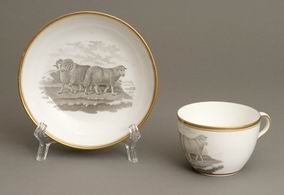 Cup and saucer depicting Custis’ sheep
Cup and saucer depicting Custis’ sheep
In 1805, Custis started a “sheep shearing” to promote the breeding of sheep. These were like traditional sheep shearing festivals in England and were the forerunners of the American agricultural fairs. Local rams won the first two years of the shearings then the merinos started showing up. They dominated the shearings and took the top prizes.
The first Merino ram was imported into the United States by the DuPont family in 1801. He was quite the sensation and was passed around to local flocks to improve the breed. Then in 1802, Col. David Humphreys purchased 100 merinos from France. ‘ Merino societies were formed to promote the breeding of merinos as well as promote agricultural practices in general.
Sheep and War
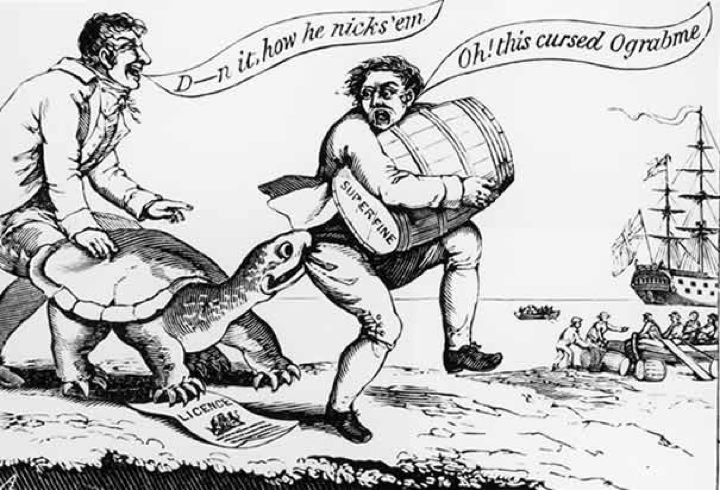 Political cartoon depicting the “cursed Ograbme” (embargo) against fine wool
Political cartoon depicting the “cursed Ograbme” (embargo) against fine wool
Starting in 1806, the US passed a series of embargoes against Britain, which effectively cut off the supply of fine wool and other woolen goods. This gave the fledgling wool industry a needed economic jump start. Woolen mills began to spring up along with improvements in mill technology. Wearing American fabrics became very fashionable. By 1809, merinos were the hot item’ as prices surged. In 1810, 4 merino rams were sold for $6000. This was a very ill-timed purchase as shortly afterwards, Napoleon’s march into Spain saw the import of 20,000 merinos to the US. Spain desperately needed the money and the US needed the sheep.
In 1812, war broke out again’ between the US and Britain. The wool industry did its best to keep up with the demands for wool goods for the military but were still hampered by the lack of decent wool sheep. The army was able to source about 70% of its woolen goods domestically and the navy about 15%. After the war, trade was opened up and there was once again a supply of fine wool coming into the US. Suddenly, there was a surplus of merino sheep and many of the once prized animals were served up as mutton.
State of the Wool Industry Today
Wool production declined post-WWII as synthetics like polyester and nylon came on the market. Wool is still used for fine suiting, warm sweaters, and a booming yarn industry. Australia leads the world in world production followed by China and New Zealand. For a tiny country,’ the sheep in New Zealand outnumber people 6 to 1! Merinos still dominate the industry and are bred all over the world. Merino fabrics can be found from socks, to sweaters, to hiking gear.
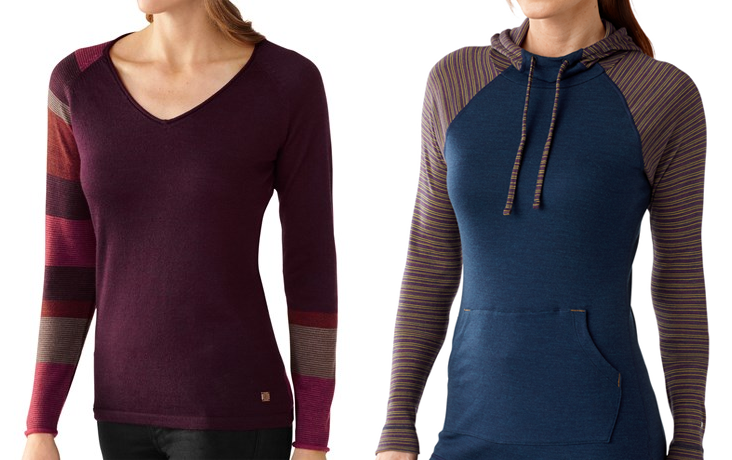 Smartwool Sweater and Sports Mid Layer made from Merino Wool
Smartwool Sweater and Sports Mid Layer made from Merino Wool
Other garments are specifically made from a certain breed or breeds of sheep. Harris Tweed is specifically made from sheep local to the Outer Hebrides of Scotland, mainly Scottish Blackface and Cheviot breeds. Lopi sweaters from Iceland are made from Icelandic sheep as Shetland sweaters and lace are made from Shetland sheep.
 Harris Tweed Jacket and Trousers in orange from Henry Holland Fall 2011 Collection
Harris Tweed Jacket and Trousers in orange from Henry Holland Fall 2011 Collection
Heritage breed associations are actively promoting their breeds of sheep to keep them from disappearing. Each breed of sheep has specific qualities and characteristics that are lost with cross-breeding. Merino yarn and fabrics are nice and soft but aren’t as lustrous as a Blue-faced Leicester or spongy like a Targhee. Spinners, knitters, and crocheters now have their choices of breed specific yarns and roving from independent mills around the world.
Wool isn’t just for itchy sweaters any more. It’s for high fashion, high-tech running socks, travel gear, and plain comfy clothing. It breathes, it keeps you warm, and with modern anti-shrink treatments, in many cases, you can wash it! If you need an all-around go to fabric, give wool a chance!



























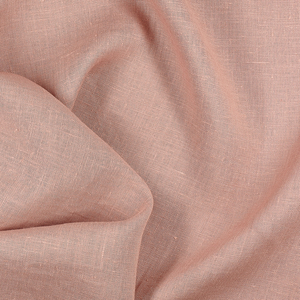


















One Comment
Sabrina Nascimbeni
I loved reading this and I found it very insightful! I would love to see some more information on alpaca wool.
I recently came to question why wool was not suitable for vegans and I discovered that it is partly due to the mistreat of the sheep in countries such as Australia and China (as you mentioned). I am not sure how accurate this is and I would like to believe that it is not true, however, I recently started my own brand working with alpaca wool in Peru for sustainable coats (https://www.safi-the-brand.com/ – please do check it out). I know that our suppliers treat the alpacas and their employees well and take great efforts to take care of the environment. It would be lovely to see more posts and interest in it as it is also such as lovely, soft and natural fabric!